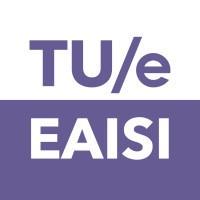Exercise 4.6#
(a)#
Multiple logistic regression model is represented by the following equation:
\[ p(x) = \frac{e^{\beta_0 + \beta_1 \times X_1 + ... + \beta_p \times X_p}}{1 + e^{\beta_0 + \beta_1 \times X_1 + ... + \beta_p \times X_p}}\]
In this case, since we have two features, the equation is as follows:
\[ p(x) = \frac{e^{\beta_0 + \beta_1 \times X_1 + \beta_2 \times X_2}}{1 + e^{\beta_0 + \beta_1 \times X_1 + \beta_2 \times X_2}}\]
Considering that \(\beta_0 = -6\), \(\beta_1 = 0.05\), \(\beta_2 = 1\), \(X_1 = 40\) and \(X_2 = 3.5\), we have:
\[ p(x) = \frac{e^{-6 + 0.05 \times 40 + 1 \times 3.5}}{1 + e^{-6 + 0.05 \times 40 + 1 \times 3.5}} = 0.3775\]
Thus, the probability that a student who studies for 40 h and has an undergrad GPA of 3.5 gets an A in the class is 37.75%.
(b)#
What we are asking is how many hours a student needs to study (\(X_1\)) to have p(x) = 0.5. Replacing in the equation presented before:
\[ p(x) = \frac{e^{-6 + 0.05 \times X_1 + 1 \times 3.5}}{1 + e^{-6 + 0.05 \times X_1 + 1 \times 3.5}} \Leftrightarrow \frac{1}{2} = \frac{e^{-6 + 0.05 \times X_1 + 1 \times 3.5}}{1 + e^{-6 + 0.05 \times X_1 + 1 \times 3.5}}.\]
This will be true when the numerator equals 1, that is, when
\[e^{-6 + 0.05 \times X_1 + 1 \times 3.5 }= 1 \Leftrightarrow \]
\[ \Leftrightarrow -6 + 0.05 \times X_1 + 1 \times 3.5 = \log(1) = 0 \Leftrightarrow \]
\[ \Leftrightarrow X_1 = 50.\]
To have a 50% chance of getting an A in the class a student needs to study 50 hours.
